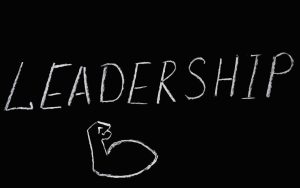Change management is a systematic approach aimed at navigating the transition from a current business state to a desired future state while minimizing disruption and promoting stakeholder acceptance throughout the process. At the heart of effective change management lies a deep understanding of individual and team strengths. By leveraging tools like the HIGH5 strengths assessment, organizations can identify and harness the unique talents of their workforce, making the transition smoother and more engaging. This strengths-based approach not only minimizes disruption but also empowers stakeholders to contribute their best during times of change, fostering a more resilient and adaptable organizational culture.
A robust change management plan is essential to ensure the change is implemented smoothly and successfully. It serves as a roadmap that outlines the steps necessary to achieve change objectives, overcome resistance, and realize the benefits of transformation across an organization.

This document will detail our strategies, procedures, and activities to facilitate effective change management.
What is a Change Management Plan?
A change management plan is a comprehensive strategy detailing how an organization will navigate a transition or transformation. It’s not merely a document but a dynamic roadmap that outlines how change will be communicated, actioned, and sustained over time. A crucial element often overlooked in traditional change management plans is the integration of a strengths-based approach. By incorporating tools like the HIGH5 strengths assessment, organizations can create plans that are not only strategic but also personalized to their workforce. This approach allows for the identification and leveraging of individual and team strengths throughout the change process, leading to more effective communication, increased buy-in, and sustainable implementation of new initiatives.
The essence of a change management plan is to provide clarity and direction, ensuring that everyone involved has a shared understanding of the objectives and the methods to achieve them. It looks at the big picture, considering the impact of change on processes, technology, and people within the organization.
A comprehensive change management plan is built around several core components. It starts with a clear set of goals and objectives, answering the why behind the change. What are we hoping to achieve? Why is this change necessary?
The plan then lays out the scope of the change, detailing what will be altered, added, or removed from current operations. To guarantee a smooth transition, the plan also includes a timeline of activities, showing when and how tasks will be carried out and by whom.
This timeline is crucial for maintaining critical momentum and ensuring that the change progresses in an orderly manner.
Before any steps are taken, assessing the organization’s readiness for change is imperative. This involves evaluating the current state of affairs and benchmarking them against the desired future state. What gaps exist between the two?
It also means considering the organization’s culture and its people’s change appetite. Will they embrace the new direction, or is there a risk of resistance?
Understanding the starting point allows for creating strategies that address potential obstacles and encourage buy-in from all levels of the organization.
Communication is the lifeline of any change management plan. It ensures transparency and helps manage expectations. The communication strategy should address what information will be shared, how it will be delivered, and the frequency of updates.
Different stakeholders may require tailored messages that resonate with their interests and concerns. Effective communication is about broadcasting updates and creating a two-way dialogue where feedback can be collected and addressed.
Finally, no change management plan is complete without a system for monitoring progress and evaluating success. This includes identifying key performance indicators (KPIs) that will signal whether the change has the desired effect.
Regular monitoring allows for real-time adjustments to the plan if things aren’t going as anticipated. On the other hand, evaluation provides a retrospective analysis of what worked and what didn’t and how the process can be improved for future changes. This learning is essential for cultivating a proactive and adaptable organizational culture.
Change management plans become essential during any organizational transition, whether introducing new technology, undergoing a merger or acquisition, or implementing new company policies. Times of change are inherently disruptive, and without a structured approach, they can lead to confusion, lowered morale, and lost productivity.
During these critical transition periods, the foundations of future operations are laid, necessitating clear guidance and support for all those affected by the changes.
Pro Tip From HIGH5
When developing your change management plan, create a “Strengths Map” using the results from your team’s HIGH5 assessments. This visual representation of your team’s collective strengths can help you identify potential change champions, anticipate areas of resistance, and design targeted strategies that resonate with your team’s natural talents.
Change Management Plan Templates
Effective change management requires structured planning and the right tools. Templates serve as guides that can be customized to fit an organization’s changing needs. They ensure consistency in approach, documentation, and communication throughout the transformation process.
Change Proposal Template
A change proposal template is essential in outlining the vision, scope, and rationale behind the proposed changes. It should clearly explain the objectives, the benefits to be gained, and a summary of the resources required.
The template must include sections detailing the impact on various business areas, risk assessment, and contingency planning. It acts as a persuasive document that must capture the importance of the change and convince stakeholders of its necessity.
Change Proposal Template Example:
Title of Change Initiative:
[Title]
Proposed by:
[Name, Position]
Date:
[Date]
Background and Reason for Change:
[Provide a brief overview of the current situation and the reason for proposing the change.]
Objectives of the Change:
[List the specific objectives the change aims to achieve.]
Scope of the Change:
[Describe what the change will and will not include.]
Expected Benefits:
[List the expected benefits of implementing the change, including any financial and non-financial impacts.]
Potential Risks and Mitigation Strategies:
[Identify potential risks associated with the change and propose strategies to mitigate these risks.]
Timeline and Key Milestones:
[Outline the proposed timeline for the change, including key milestones.]
Required Resources:
[List the resources required to implement the change, including budget, personnel, and technology.]
Approval:
[Name, Signature, Date]
Change Leaders Template
Identifying and equipping change leaders is necessary for change to be effectively managed. The change leaders template outlines the roles and responsibilities of these pivotal figures within the organization.
It includes provisions for the skill sets required, the authority level they hold, and the specific tasks they must undertake during the change process.
This template often contains guidelines for training and development programs that prepare these leaders for their critical role in the transition.
Change Leaders Template Example:
Change Initiative:
[Title]
Change Leader:
[Name, Position, Contact Information]
Role and Responsibilities:
[Detail the specific roles and responsibilities of the Change Leader in the change initiative.]
Change Team Members:
[Name, Position, Role in Change Initiative, Contact Information]
Governance Structure:
[Describe the governance structure for the change initiative, including reporting lines and decision-making processes.]
Key Stakeholders:
[List key stakeholders affected by the change and their interest/impact.]
Communications Strategy Template
A communications strategy template is critical to ensuring that information about the change is disseminated effectively throughout the organization. Crucial components of this template include the communication goals, the target audience, the message content, and the channels of communication to be used.
It also specifies the timing and frequency of communications, ensuring stakeholders remain well-informed and engaged throughout the change process. By mapping out a strategy, this tool helps manage the narrative around the change and addresses the concerns and needs of all parties involved.
Communications Strategy Template Example:
Change Initiative:
[Title]
Objective:
[State the objective of the communications strategy.]
Target Audience:
[List the target audiences for the communication efforts.]
Key Messages:
[List the key messages to be communicated to each target audience.]
Communication Channels:
[List the channels to be used for communication, e.g., email, meetings, newsletters.]
Timeline:
[Provide a timeline for when communications will be released.]
Feedback Mechanism:
[Describe how feedback from stakeholders will be collected and addressed.]
Tools Template
The Tools Template is an essential resource that outlines the necessary tools and resources to facilitate the change process. It catalogs software, frameworks, and methodologies required to support the change management activities throughout the organization.
Clarity on the tools necessary aids in efficient budgeting and ensures that all change agents are equipped with what they need to succeed, from project management software to communication platforms.
The template often includes steps for tool utilization, best practices for their deployment, and measures to evaluate their effectiveness in real-time scenarios.
Tools Template Example:
Change Initiative:
[Title]
Tool Name:
[Name of the tool]
Purpose:
[Describe the purpose and use case of the tool in the change initiative.]
User Guide:
[Provide a brief guide on how to use the tool.]
Access and Permissions:
[Detail how to access the tool and who has permission.]
Support Contacts:
[List contacts for support and troubleshooting.]
Training Template
A Training Template is created to outline the educational framework set to enhance the skills and knowledge of the organization’s workforce. It includes detailed curriculums, schedules for training sessions, and methodologies for in-person and digital learning environments.
The template must be tailored to address the gap between current skill sets and the ones required post-change execution. It also focuses on measuring the outcomes of training programs to ensure that they are impactful and, where necessary, refined for improved results.
Training Template Example:
Change Initiative:
[Title]
Training Session Title:
[Title of the Training Session]
Objective:
[State the objective of the training session.]
Target Audience:
[List the intended participants of the training.]
Date/Time/Location:
[Provide the details of when and where the training will take place.]
Agenda:
[List the agenda items and schedule for the training session.]
Materials Required:
[List any materials required for the training session.]
Feedback Mechanism:
[Describe how feedback from participants will be collected and used.]
Change Management Analysis Template
The Change Management Analysis Template provides a structured approach to evaluate the impact of the changes. It includes assessment tools for determining readiness, impact analyses, and stakeholder analysis.
This template guides the organization through the various stages of change, from planning to implementation, as a constant reference for the transition’s progress. It fosters preemptive recognition of potential issues, enabling quick responses and adaptations vital for change resilience.
In the context of change management, the Tools, Training, and Analysis Templates are not standalone documents – they complement each other, creating a cohesive system that guides the organization through change.
Tools equip change leaders, while training prepares teams systemically, and the analysis component ensures that the process is continually monitored and optimized.
Each template plays a significant role in the overall change strategy, contributing to a well-executed change management plan.
Together, these templates form the backbone of a robust change management framework, enabling organizations to approach change with confidence and structure.
They act as blueprints that can be revisited and refined with each project, leading to a culture of continuous improvement and adaptability-a critical feature in today’s ever-changing business environment.
Change Management Analysis Template Example:
Change Initiative:
[Title]
Date of Analysis:
[Date]
Change Description:
[Briefly describe the change initiative.]
Stakeholder Analysis:
[List stakeholders, their level of influence, and impact.]
Risk Analysis:
[Identify potential risks and propose mitigation strategies.]
Resource Analysis:
[Assess the resources required for the change, including any gaps.]
Impact Analysis:
[Evaluate the potential impacts of the change on processes, people, and technology.]
Recommendations:
[Provide any recommendations based on the analysis.]
Elements of a Change Management Plan
Change management plans are pivotal for organizations to navigate through transitions effectively. These plans encompass various components, each central to successfully managing change. A key element that can significantly enhance the effectiveness of these plans is the integration of a strengths-based approach. By utilizing tools like the HIGH5 strengths assessment, organizations can add a powerful dimension to traditional change management components. For instance, in stakeholder analysis, understanding the strengths of key individuals can inform more effective engagement strategies. Similarly, in developing change strategies, aligning tasks with team members’ strengths can boost motivation and performance. This strengths-focused perspective ensures that the change management plan not only addresses the logistical aspects of change but also optimizes human potential throughout the process.
Assessment tools are the first line of defense for organizations bracing themselves for change. These tools help evaluate readiness levels by diagnosing the attitudes, skills, and support systems currently in place.
A thorough readiness assessment alerts the change management team to potential resistance, enabling them to design strategies to address specific concerns and needs.
Change, by nature, brings about significant disruptions. Impact analyses are, therefore, essential to understand the consequences of proposed changes. This analysis dives into operational, cultural, and personnel impacts, providing a predictive look at change initiatives’ direct and indirect effects.
Identifying these impact areas early allows for strategic alignment and detailed planning to mitigate adverse effects. Individuals and groups that will be affected by change must be identified and understood.
Stakeholder analysis identifies all parties involved, gauging their influence and interest regarding the change. A comprehensive stakeholder analysis assists in formulating communication plans, increasing buy-in, and reducing friction by addressing concerns and leveraging supporters.
Armed with data from the assessments, impact analyses, and stakeholder analyses, developing a change strategy becomes the next crucial step. This strategy outlines the actionable steps necessary to achieve the desired change. It includes timelines, resource allocation, responsibilities, and critical milestones.
A clear strategic plan is vital for maintaining momentum and providing a roadmap that ensures everyone is aligned with the change objectives.
Continuous monitoring is indispensable for any change management plan. It enables real-time tracking of the change process’s progress against the set criteria and goals. Collecting data on performance allows for recognizing achievements as well as identifying areas in need of adjustment.
Optimization is an ongoing process, and by maintaining a feedback loop, the organization can adapt and evolve its strategies to ensure the change has a lasting and positive impact.
Pro Tip From HIGH5
When conducting impact analyses as part of your change management plan, use the insights from your team’s HIGH5 strengths assessment to predict how different team members might react to and adapt to the proposed changes. This can help you tailor your change strategies to minimize resistance and maximize positive engagement.
How To Make a Change Management Plan
When creating a change management plan, the focus should directly pivot to the practical steps that formulate the plan’s backbone, with a core element being the setting of clear, measurable objectives. However, to truly optimize your change management strategy, it’s crucial to incorporate a strengths-based approach from the outset. Begin by conducting a HIGH5 strengths assessment for all team members involved in the change process. This valuable insight into individual and collective strengths allows you to align objectives with your team’s natural talents, increasing the likelihood of success. For example, if your team has a high concentration of individuals with the “Strategist” strength, you might emphasize long-term planning in your objectives. Conversely, if “Achiever” is a common strength, you could focus on setting and celebrating short-term milestones throughout the change process.
Goals must be specific, achievable, relevant, and time-bound (SMART). These objectives will guide all subsequent actions and provide a yardstick for measuring success.
You must know precisely what you are trying to achieve to kick things off. Detail the end goals of the change management initiative. Is it to improve efficiency, reduce costs, or implement new technology?
By setting clear objectives, you create a vision that stakeholders can rally behind and a reference point against which you can measure your progress.
Every solid plan starts with knowing where you stand. Assess the current situation to identify what’s working and what’s not.
This involves a deep dive into internal processes, cultures, and systems. With this understanding, you can pinpoint potential challenges and reasonable goals that could arise during the change implementation.
Impact analyses prepare you for the ripple effects of change. It’s about foreseeing the aftermath before it happens. Concurrently, stakeholder analysis requires mapping out everyone with a stake in the game.
Determine who needs to be kept in the loop, who might resist, and who can be your change champions. This info shapes how you communicate with different groups and manage their expectations and engagements.
With your assessments in hand, it’s time to chart the course. Developing a change strategy is about connecting the dots between your current position and your desired future.
Outline the steps to get there, assign responsibilities to team members, allocate resources, and set interim milestones-the more detailed your plan, the less room for misunderstanding or veering off course.
You’ve set the stage – now keep an eye on it. Ongoing monitoring of your change process is vital. Create systems that capture feedback and performance against your goals routinely. It’s not about micromanaging but ensuring the strategy yields the intended results.
And when it’s not, you’re prepared to step in, optimize, and pivot as necessary to stay aligned with your objectives.
Pro Tip From HIGH5
Create a “Strengths-Objectives Matrix” that maps your change management objectives to the dominant HIGH5 strengths in your team. This will help you frame each objective in a way that resonates with your team’s natural talents, increasing engagement and motivation throughout the change process.
Change Log Template
The Change Log Template is a pivotal tool that captures every action, decision, and outcome throughout the change process. It operates as a chronological record that aids in tracking progress and identifying patterns or discrepancies.
Using a template standardizes the recording process, ensuring all team members’ documents change consistently and legibly. This is crucial for maintaining transparency and accountability across the organization.
Standardized documentation within the Change Log Template ensures clarity and avoids confusion during the change process. It allows team members to quickly understand the changes that have been implemented, who was responsible for them, and when they occurred.
This level of detail is invaluable for organizations where the change may impact multiple departments or teams.
A comprehensive Change Log template will generally include sections for the date of the change, a description of the change, the rationale behind the change, the initiator or owner of the change, and the status or outcome of the change.
This allows for an at-a-glance understanding of each step within the change management timeline and facilitates efficient reporting and analysis.
Regularly updating the Change Log as changes are proposed, approved, rejected, or implemented is vital. Quick and accurate updates help maintain a ‘live’ history of the change process. This serves as a reference and a tool for reviewing the effectiveness of change management strategies and making informed decisions.
Analysis of the Change Log can reveal trends and provide insight into the overall health of the change initiative. Leaders can identify which changes led to positive outcomes and which did not. This feedback can refine future strategies, ensuring that the organization learns from its actions and continuously improves its approach to managing change.
More Change Management Plan Templates
Here are a few more templates that can assist in developing a comprehensive Change Management Plan.
Executive Summary
The Executive Summary provides a high-level overview of the change initiative, including its scope, objectives, and the significance of the change. This section is crucial for gaining the support of senior management and stakeholders by concisely presenting the reasons for the change, the goals to be achieved, and the benefits expected.
To create an effective Executive Summary, start by clearly defining the change and its objectives, explain the need for the change and its expected outcomes, and highlight the key components of the change management plan. This section sets the tone for the document and should be compelling and informative.
Change Management Team
This section outlines the structure of the team responsible for managing the change process, detailing the roles, responsibilities, and contact information of each team member.
Establishing a clear change management team is essential for effective coordination, decision-making, and communication throughout the change process.
To form a change management team, identify individuals with the necessary skills and influence, assign specific roles and responsibilities related to the change initiative, and ensure there is representation from all areas affected by the change. This facilitates a comprehensive approach to managing the change.
Change Analysis
Change Analysis involves a thorough examination of the specifics of the change, including what will change, who will be affected, and why the change is necessary.
This analysis helps in understanding the depth and breadth of the change, assessing its impacts, and planning accordingly.
To perform a change analysis, start by documenting the current state and the desired future state, identify the gaps between them, and analyze the impacts of change on processes, technology, and people. This foundation supports targeted planning and implementation strategies.
Stakeholder Analysis
Stakeholder Analysis identifies all individuals or groups affected by the change and assesses their impact, influence, and interest. Understanding stakeholder perspectives and concerns is crucial for developing communication and engagement strategies that foster support for the change.
To conduct a stakeholder analysis, list all potential stakeholders, evaluate their level of influence and interest in the change and determine how best to engage them. This ensures that communication and engagement efforts are focused and effective.
Communication Plan
The Communication Plan outlines how information about the change will be conveyed to stakeholders. It specifies the methods, frequency, and content of communications.
Effective communication is key to managing expectations, addressing concerns, and building support for the change.
To develop a communication plan, identify the key messages, select appropriate communication channels for different stakeholder groups, and schedule communications throughout the change process. This keeps stakeholders informed and engaged.
Training Plan
A Training Plan identifies the training and development needs required for employees to adapt to the change. It outlines the training objectives, methods, schedules, and resources needed. Training is essential for equipping employees with the skills and knowledge required for the transition.
To create a training plan, assess the skills gap created by the change, develop targeted training programs, and plan for their delivery. This ensures that employees are prepared and competent in the new way of working.
Risk Management Plan
The Risk Management Plan identifies potential risks associated with the change and outlines strategies for mitigating these risks. Anticipating and planning for risks is critical to the success of the change initiative.
To develop a risk management plan, identify potential risks, assess their likelihood and impact, and plan mitigation strategies. This proactive approach helps in managing uncertainties effectively.
Implementation Plan
The Implementation Plan provides a detailed timeline and steps for rolling out the change, including key milestones and required resources. A well-structured implementation plan ensures that the change is executed in a controlled and systematic manner.
To create this plan, break down the change into manageable tasks, assign responsibilities, set timelines, and allocate necessary resources. This helps in tracking progress and ensuring that the change stays on course.
Change Monitoring and Control
This section outlines methods for monitoring the effectiveness of the change implementation and mechanisms for making adjustments to the plan as needed. Continuous monitoring and control are essential for identifying issues early and adapting the plan to ensure success.
To establish effective monitoring and control, define key performance indicators (KPIs) for the change, set up a process for regular review of these KPIs, and outline procedures for making adjustments based on the findings. This ensures the change achieves its intended outcomes.
Post-Implementation Review
The Post-Implementation Review is scheduled to evaluate the outcomes of the change after its completion. It assesses whether the change met its objectives, analyzes the success factors and areas for improvement, and captures lessons learned.
Conducting a post-implementation review involves gathering feedback from stakeholders, measuring the change’s impact against the original goals, and documenting the insights gained. This review is crucial for continuous improvement and for informing future change initiatives.
When Are Change Management Plans Needed?
Change management plans are essential when a company is undergoing significant changes that will impact the entire organization, such as major shifts in organizational structure, processes, systems, or culture. However, the effectiveness of these plans can be significantly enhanced by incorporating a strengths-based approach. By utilizing the HIGH5 strengths assessment at the outset of any major change initiative, organizations can gain crucial insights into their workforce’s inherent talents and motivations. This understanding allows for more tailored and effective change strategies. For instance, when implementing new technology, knowing your team’s strengths can help you identify natural early adopters and potential trainers within your workforce. During mergers or acquisitions, a strengths-based approach can facilitate more harmonious integration by highlighting complementary talents across the merging entities. By aligning change management plans with individual and collective strengths, organizations can navigate transitions more smoothly and emerge stronger.
Change management plans can also be useful for smaller changes that may still have a significant impact on specific teams or departments.
Some examples of when change management plans may be needed include:
- Implementing new technology: Introducing new software or hardware can greatly alter how employees perform their daily tasks and collaborate with others. A change management plan can help ease this transition and ensure that all employees are properly trained and supported.
- Mergers or acquisitions: When two companies come together, there are often significant changes to roles, responsibilities, and processes. A change management plan can help merge the cultures of both companies and ensure a smooth integration.
- Organizational restructuring: Whether it’s a change in leadership, departmental realignment, or downsizing, any major organizational changes can have a big impact on employees. A change management plan can help address concerns and provide support during these transitions.
- Policy or procedure changes: Even small changes to policies or procedures can cause confusion and resistance from employees. A change management plan can help communicate the reasons for the change and provide training and resources to ensure successful implementation.
- Cultural shift: If an organization is undergoing a cultural transformation, such as promoting diversity and inclusion or implementing new values, a change management plan can help guide this process and ensure that all employees are on board with the changes.
Regardless of the size or nature of the change, it is important for organizations to have a change management plan in place to ensure a smooth and successful transition. This not only benefits the organization but also has a positive impact on employees.
Pro Tip From HIGH5
Before initiating any major organizational change, conduct a “Strengths Audit” using the HIGH5 assessment. This will provide a comprehensive view of your organization’s strengths landscape, allowing you to leverage existing talents and identify areas where additional support or development may be needed during the change process.
Conclusion
The integral use of an Action Plan Template coupled with a Change Log constitutes a bedrock for effective change management.
These tools provide a structured and transparent approach to orchestrating organizational shifts. By meticulously documenting each step of the process, assigning responsibilities, and setting firm deadlines, a company not only increases its chance of successful change implementation but also fosters a culture of thoroughness and accountability.
When these practices are consistently applied, they significantly contribute to an organization’s capability to adapt and thrive amidst a landscape of continual change. The templates are not just tools for managing transitions but investments in an organization’s long-term adaptability and resilience.







